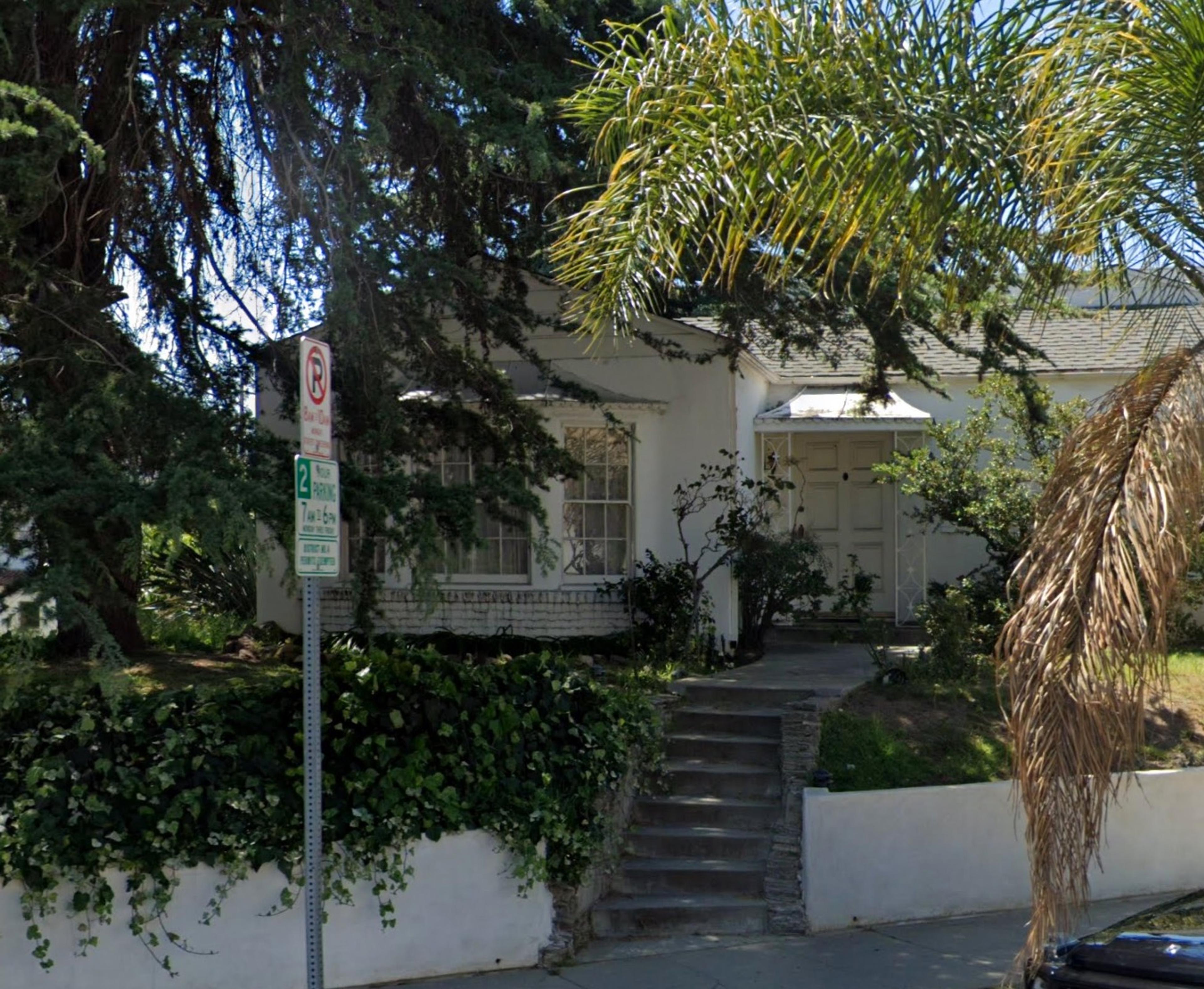Nothing says Old Westwood like the grace and charm of a 1936 Hollywood Regency home:
Of course, since grace and charm are involved, it must be destroyed! Because Scott Wiener says single family zoning is bad for the environment, it shall be replaced with a five-story, 56-foot 11-unit multifamily. Because that's...better...for the environment.
See all those trees? Apparently also bad for the environment, or so say the YIMBYs.
How dare this incredible tree mock the Chan Zuckerberg Inititative!
Burn it with fire!!!
And because the new development is "transit oriented," zoning requirements are thrown out the window.
Hey, you know what's funny? Renderings, or more to the point, the renderers. Cuz they lie. Always. For example, this is what the 1936 home is being replaced with:
Damn, that is some goofy-ass goofiness. But...what's that in the distance at left? Across the street?
HUH? There's NOTHING OVER TWO STORIES anywhere in the neighborhood....except church towers. Here's what's actually across that particular intersection:
See, renderers always put giant-ass buildings across the street from what they're proposing, so some sleepy functionary down at Planning gives their drawings a desultory glance and rubber stamps the damn thing, since I mean after all there's already eight-story office towers on every corner, right?
About Nathan Marsak
NATHAN MARSAK says: “I came to praise Los Angeles, not to bury her. And yet developers, City Hall and social reformers work in concert to effect wholesale demolition, removing the human scale of my town, tossing its charm into a landfill. The least I can do is memorialize in real time those places worth noting, as they slide inexorably into memory. In college I studied under Banham. I learned to love Los Angeles via Reyner’s teachings (and came to abjure Mike Davis and his lurid, fanciful, laughably-researched assertions). In grad school I focused on visionary urbanism and technological utopianism—so while some may find the premise of preserving communities so much ill-considered reactionary twaddle, at least I have a background in the other side. Anyway, I moved to Los Angeles, and began to document. I drove about shooting neon signs. I put endless miles across the Plains of Id on the old Packard as part of the 1947project; when Kim Cooper blogged about some bad lunch meat in Compton, I drove down to there to check on the scene of the crime (never via freeway—you can’t really learn Los Angeles unless you study her from the surface streets). But in short order one landmark after another disappeared. Few demolitions are as contentious or high profile as the Ambassador or Parker Center; rather, it is all the little houses and commercial buildings the social engineers are desperate to destroy in the name of the Greater Good. The fabric of our city is woven together by communities and neighborhoods who no longer have a say in their zoning or planning so it’s important to shine a light on these vanishing treasures, now, before the remarkable character of our city is wiped away like a stain from a countertop. (But Nathan, you say, it’s just this one house—no, it isn’t. Principiis obsta, finem respice.) And who knows, one might even be saved. Excelsior!””
Nathan’s blogs are: Bunker Hill Los Angeles, RIP Los Angeles & On Bunker Hill.
